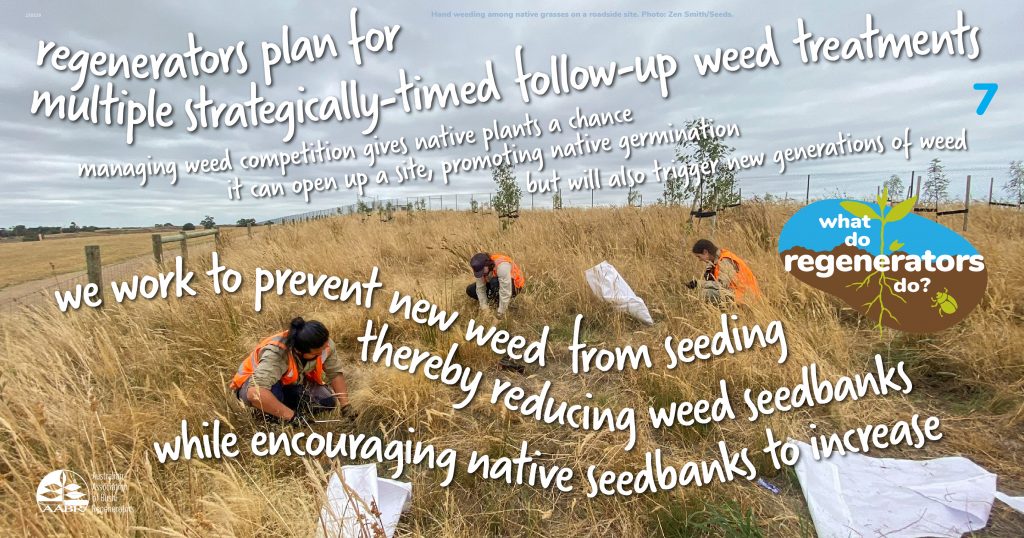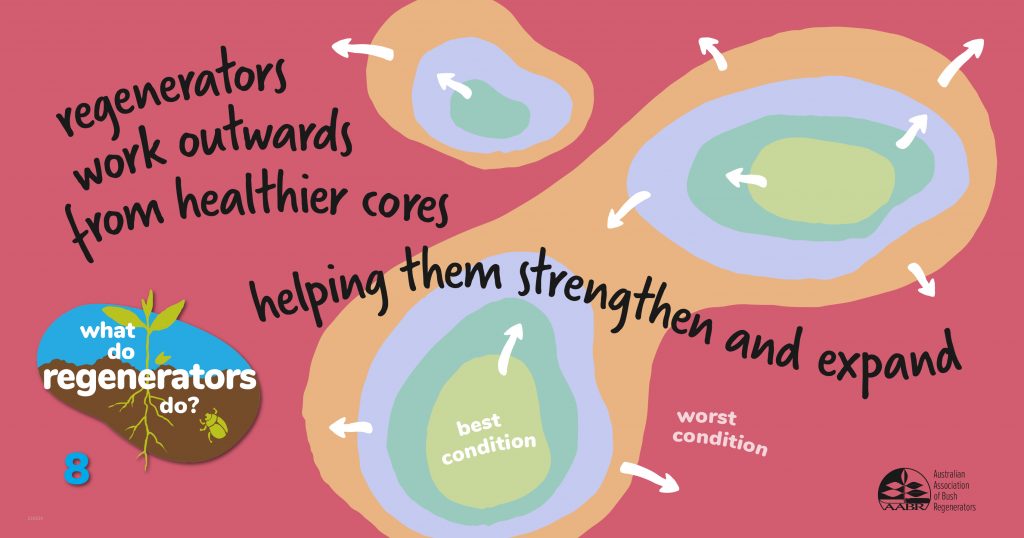In the 1960s and 1970s Joan and Eileen Bradley developed a series of weed control and native vegetation recovery techniques through trial and error. Their work was the beginning of bush regeneration in New South Wales. The ‘Bradley method’ involved methodically clearing small areas in and around healthy native vegetation so that the each area was re-colonised by the regeneration of native plants, replacing the weeds.
The method places great emphasis on on rigorous and timely weed control follow up during the recovery phase (a tenet still adhered to in modern bush regeneration). The process showed that, once native vegetation was re-established, continuing weed control was needed infrequently, mainly in vulnerable spots such as creek banks, roadsides and clearings.
The Bradley method follows three main principles,
- secure the best areas first. They are the easiest to work with the best results. They are the core areas that can then be expanded.
- minimise disturbance to the natural conditions (e.g. minimise soil disturbance and off-target damage).
- don’t overclear – let the regeneration of the bush set the pace of clearance.
The essence of these principles guides modern bush regeneration, taking into account modern techniques and the need for appropriate ecological disturbance to trigger regeneration.
An insight into the beginnings of bush regeneration can be heard on ABC’s Earshot program of 7/4/15, The other green army: The story of how the ‘eccentric’ Bradley sisters started bush regeneration—a movement that radicalised the battle against one of the greatest and oldest enemies of the Australian bush; invasive weeds. Nick Franklin, an experienced bush regenerator, heads into ‘the scrub’ in search of this history.



Leave A Comment